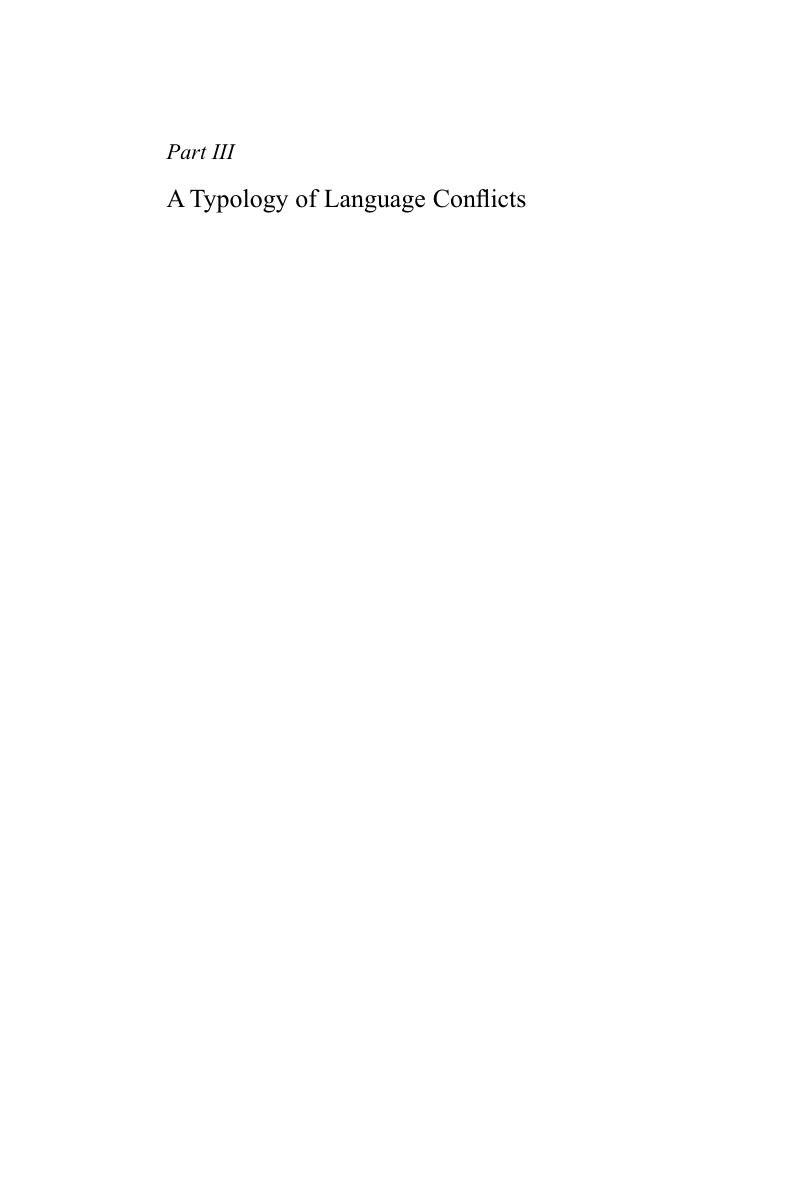Book contents
- Language Conflict and Language Rights
- Language Conflict and Language Rights
- Copyright page
- Dedication
- In Memoriam
- Contents
- Figures
- Tables
- Preface and Acknowledgements
- Introduction
- Part I Language and the Speaker
- Part II Language in the World
- Part III A Typology of Language Conflicts
- Part IV Language Endangerment, Extinction, and Revival
- References
- Index of Names
- Index of Languages, Nationalities, Ethnicities, and Places
- Index of General Concepts and Events
- References
Part III - A Typology of Language Conflicts
Published online by Cambridge University Press: 02 August 2018
- Language Conflict and Language Rights
- Language Conflict and Language Rights
- Copyright page
- Dedication
- In Memoriam
- Contents
- Figures
- Tables
- Preface and Acknowledgements
- Introduction
- Part I Language and the Speaker
- Part II Language in the World
- Part III A Typology of Language Conflicts
- Part IV Language Endangerment, Extinction, and Revival
- References
- Index of Names
- Index of Languages, Nationalities, Ethnicities, and Places
- Index of General Concepts and Events
- References
Summary

- Type
- Chapter
- Information
- Language Conflict and Language RightsEthnolinguistic Perspectives on Human Conflict, pp. 189 - 354Publisher: Cambridge University PressPrint publication year: 2018



